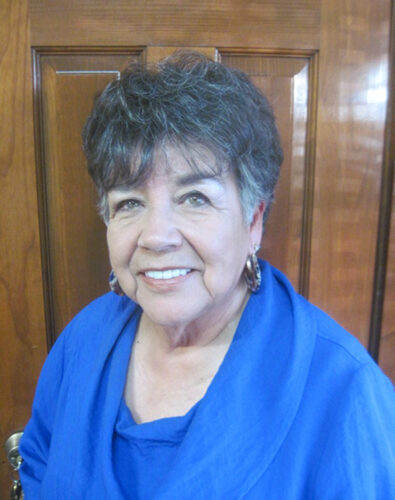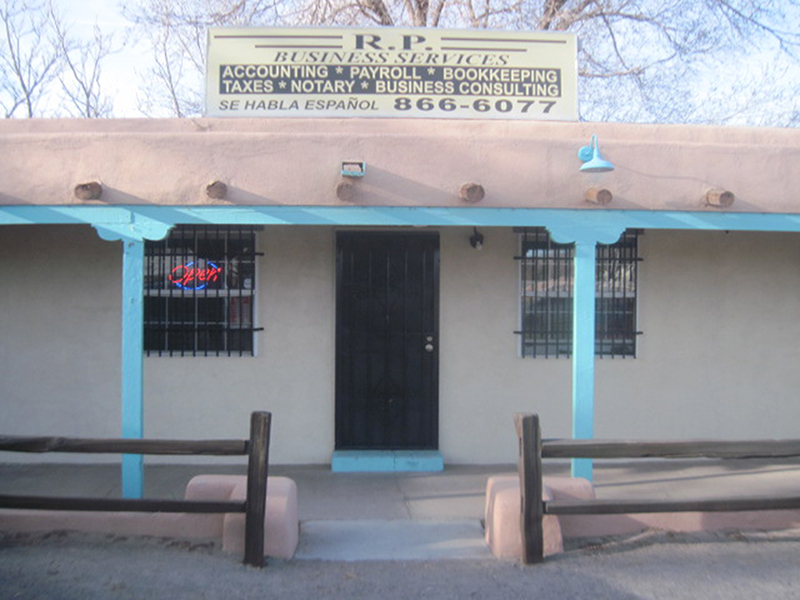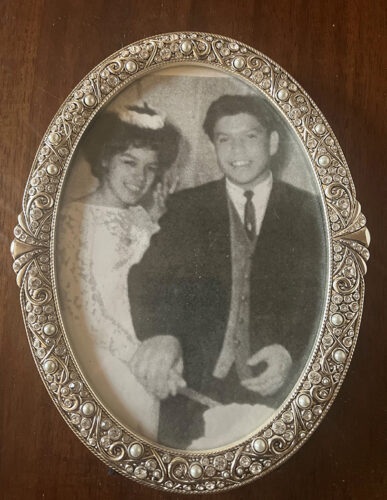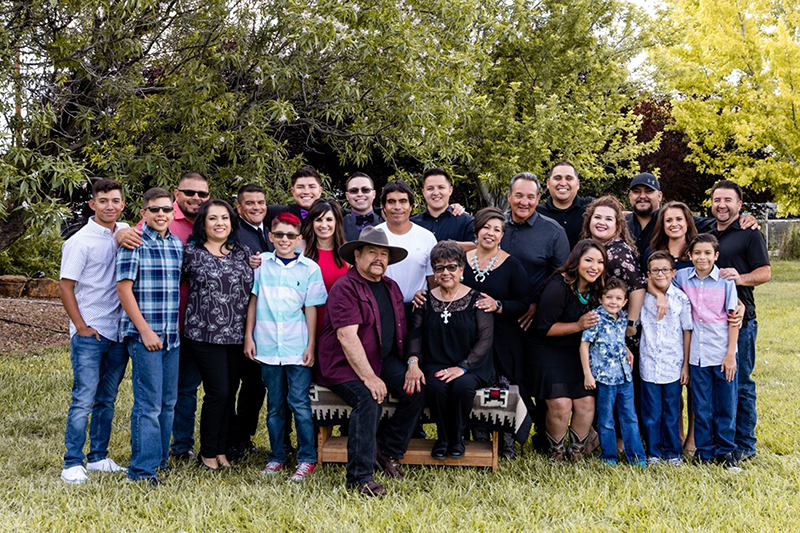La Historia del Rio Abajo
Last week’s edition of La Historia del Rio Abajo described Pat Gomez, the oldest of three children from a broken home in the 1950s. Pat’s mother, Rita Baca, strove to keep her small family together, working long hours while living with her widowed father, Augustin Villa, in a small adobe house in Los Lunas and later on her own in Albuquerque.
Pat helped with the chores and improvised with makeshift toys, consistently relying on the strength of her personality, intelligence, resourcefulness and great gumption.
School days in Albuquerque
Pat always liked school and did well from the start. She was fortunate to be among the few Hispanic kids who were able to speak both English and Spanish when she entered the first grade.
Away from school, all of Pat’s classmates, both Hispanic and Anglo, spoke Spanish. But during school hours, everyone had to speak English, even on the playground.

Photo courtesy of Richard Melzer
Pat Gomez
Those who broke this English-only rule faced corporal punishments. Some teachers used rulers to hit students on their knuckles. A geography teacher made children sit in front of the classroom wearing a dunce cap. Pat recognized the irony of such a punishment when she was required to take Spanish classes in high school.
Pat often felt ashamed of her Hispanic heritage and poverty at lunch time. Embarrassed to have only bean burritos made with homemade tortillas to eat, she ate separately from her Anglo classmates. She wondered what sandwiches would taste like if her family could afford them. Little did she know that many of her Anglo classmates would much prefer burritos to sandwiches when they grew to adulthood.
Pat faced a traumatic incident in the fifth grade. One day, while she attended Coronado Elementary School in Albuquerque’s Barelas barrio, a boy stabbed another boy, nearly killing him. Forty years later, at a school reunion, the aggressor asked the victim’s forgiveness. The now-grown victim graciously accepted it.
Pat never engaged in such violence, but she did encounter Pachuca girls when she took a rare trip to the Santa Fe Fiesta. Known for their slang and tough demeanor, Pachucas often carried small knives or razor blades in their large hairdos and in their socks or shoes. Luckily, the Pachucas who Pat met in Santa Fe had no cause to use their weapons that day at the fiesta.
Later, when Pat attended junior high, a priest not only raped a mentally-disadvantaged girl, but also absconded with church money, never to be seen again. The tragedy has influenced Pat’s feelings about the church ever since.
According to Pat, there were tensions between Hispanic, Anglo and Black students when she arrived at Albuquerque High School in 1961. More often, Pat recalled that division usually existed between rich and poor students rather than between races or ethnicities.

Photo courtesy of Pat Gomez
Pat Gomez’s R.P. Business Services, Los Lunas.
Pat worked hard to make enough money so she would be able to afford new clothes and pay her bus fare so she did not have to walk to far-off Albuquerque High. In order to earn money for the fare, she got up early and asked homeowners if she could sweep their walks or take out their trash for small change.
To afford better clothes, Pat worked in the school cafeteria and at McLellan’s 5 & Dime Store after school hours. She and her family also spent summers on California farms where they picked radishes and turnips to supplement their meager income.
Paid by the number of boxes they filled, the family labored in the hot sun from dawn to dusk. Pat worked side-by-side with Mexican migrant workers who wore special straw hats to confirm that they were in the country legally to help with the harvest.
Mischief
Like many young people, Pat got into her share of mischief. In one instance, Pat and her two younger sisters went to a Christmas parade in Albuquerque. It was so cold and her sisters shivered so much that Pat ushered them into a store where they each put on warm hats and gloves — and simply left.
Later, when Pat was about 12, she taught herself how to drive a car and maintain vehicles by performing regular oil changes. Eager to test her driving skills, Pat hot-wired a family member’s car and took her younger sister, Bridgette, and infant brother (Rita had remarried) on a drive. Driving by the city zoo and the old Tingley baseball field, Pat was so short that see could barely see over the dashboard.
Pat’s “joy ride” soon ended, leaving her to face the extreme punishment of not being allowed to go to the local community center to see her friends and participate in activities, especially the weekly Friday night dance she always looked forward to.
Pat faced the same punishment for the only time she got into trouble in high school. Somehow, her friends convinced her to join them on a trip to Abiquiu to visit a friend who had moved there. Learning that Pat had ditched school, Rita hit her daughter and banned her from the community center once again.
Boys
Many of Pat’s friends were boys, but she seldom dated, given the time she devoted to her school work, jobs, chores and preparing family meals, a task she grew to enjoy.

Photo courtesy of Pat Gomez
Robert and Pat Gomez at their wedding reception, 1963.
This hardly meant that there weren’t boys who were interested in Pat. While working at McLellan’s, Pat noticed a tall red-headed soldier from Sandia Base who came to the store’s deli section quite often. Friendly, he always left her large tips.
Pat was flattered but unprepared for the day the boy’s mother arrived from Wisconsin. The woman came to Pat’s home and, offering a good life on a big farm, asked Rita’s permission to have her son marry Pat. Rita rejected the woman’s proposal with a resounding, “No!”
Pat was far more attracted to Robert Gomez, a young man she had met while cruising with her friends on Central Avenue in July 1962. Pat and Robert found that they had a lot in common, especially their love of dancing.
Although she was only 16 and Robert was only 17, the couple began to talk about leaving school and getting married. As Pat puts it, she always liked school but she liked Robert even more.
Below the legal age of 18, Pat needed her mother’s permission to be married. This time, Rita approved wholeheartedly. Rita signed a legal consent form and accompanied the couple to see a judge to conduct the ceremony in Albuquerque. But the judge refused to perform the ceremony, stating the only way he would do so would be if Pat was pregnant.
Not discouraged, Pat, Robert and their mothers considered two other destinations for the marriage to take place — Las Vegas, Nev., and Juarez, Mexico. They chose Juarez. Once across the border, they found an available judge, who gladly conducted the ceremony on Oct. 19, 1963.
Back home, the couple had a small reception, complete with a beautiful gown and wedding cake. Many friends and relatives attended the joyous event.
Returning to Los Lunas
Robert had no job and no car. He had to borrow $30 from his brother to start their household. Somehow, Pat and Robert got by, having learned how to live frugally from an early age.

Photo courtesy of Pat Gomez
Pat and Robert Gomez with their family, including four surviving children, seven grandchildren and eight great-grandchildren.
Pat and Robert lived in several states, but eventually returned home to New Mexico to settle in Los Lunas and raise a family of three sons and a daughter.
Pat and Robert opened successful companies, including an accounting and tax return business, which Pat has run with the help of many relatives for 37 years.
Only Robert’s passing in 2021 ended their happy marriage of 58 years. Pat forges on, fortified by the love of her family and the admiration of her many grateful clients.
Great gumption had gotten Pat through the challenges of her youth and great gumption has sustained her through every moment of every day ever since.

Richard Melzer, guest columnist
Richard Melzer, Ph.D., is a retired history professor who taught at The University of New Mexico–Valencia campus for more than 35 years. He has served on the board of directors of the Valencia County Historical Society for 30 years; he has served as the society’s president several times.
He has written many books and articles about New Mexico history, including many works on Valencia County, his favorite topic. His newest book, a biography of Casey Luna, was published in the spring of 2021.
Those interested in joining the Valencia County Historical Society should contact Dr. Melzer at [email protected].
















